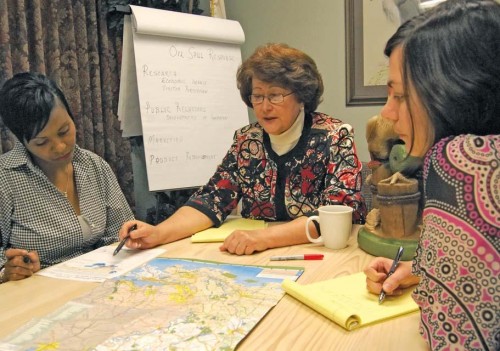Tuesday, May 25
May 25, 2010Thursday, May 27
May 27, 2010The BP oil spill in the Gulf of Mexico continues to deal heavy blows to Louisiana’s commercial fishing and seafood industry. Tourism, some fear, could suffer the same fate if things are not done to change visitors’ perceptions.
“During disasters, a lot of people really don’t have a good grasp on geography,” explained Sharon Alford, executive director of the Houma Area Convention and Visitors Bureau (HVB). “They clump Louisiana together, they hear oil spill, and in their minds, they think the oil is all over the place. They don’t realize the city of Houma is 30 miles [or more] from the Gulf.”
It is that misstep that could cost the area millions.
For many, charter fishing is an activity that speaks more to people’s way of life than anything else. It is a mainstay of Cajun culture that draws thousands to the area every year. But today, small business owners and boat captains throughout the region are struggling to keep anglers from canceling their reservations. The waters, some find, are not as inviting as they used to be.
Large amounts of crude continue to flow into the Gulf from the remnants of the Deepwater Horizon rig located more than 50 miles southeast of Venice. The rig’s blowout preventer failed to activate on April 20, and so far, BP has been unable to cap the leak.
Fishermen have been barred from entering hundreds of miles of water that is normally bustling with activity this time of year. Fixing the industry’s woes is going to be tricky. “We don’t know what we’re working with. We don’t know whether this is going to be a short-term problem or a long-term problem,” said Alford.
While BP and the Coast Guard have vowed to clean up the mess, it is unclear how long it will take for things to return to normal once the leak is stopped.
In the coming months, the visitors bureau will focus heavily on reestablishing good relationships with some of the nation’s biggest outdoor organizations, which routinely flock to Louisiana to host events and promote products.
Cabella’s Speckled Trout Tournament is slated to begin on October 2 in Cocodrie. That event could be cancelled if area waters are still closed.
Social-networking sites like Facebook, Twitter and YouTube could also find a niche in the agency’s game plan. “It’s the quickest way, and with limited funds, it’s the most cost effective way to spread our message,” said Alford.
But until the situation in the Gulf is resolved, it is a waiting game.
The Louisiana Office of Tourism is expected to divvy out $15 million sometime this week to help strengthen marketing campaigns aimed at pulling in tourists. Area officials are working with the agency to decide where the money will be spent. BP granted the funds to the state, but some question whether it will be enough.
“When you have that kind of money dumped in your lap, you want to make sure that you’re going to use it prudently,” Alford said. “We’ll do whatever [it takes] to send the right message, because you can’t just simply say our waters are clear.”
An update issued by the Louisiana Office of Tourism on Thursday claimed 80 percent of Louisiana’s charter fishing providers are located in areas unaffected by the oil spill. Getting that news to resonate throughout the nation, however, is quickly becoming a challenge for local leaders like Alford and her small seven-person staff.
LOOKING IN THE MIRROR
Before Katrina, Houma had the second largest tourism industry in the state. In 2004, more than $95 million was spent in the growing market. By 2005, things had changed drastically. High water ripped through parts of New Orleans, destroying homes, businesses and people’s lives. But it did not end there.
National media attention was endless. Katrina was deemed one of the most catastrophic events Louisiana had ever seen. Tourists, dwindling by the second, were shaken. The state’s beauty had diminished in their eyes and the number of visitors plummeted.
Houma, about 60 miles south of New Orleans, eluded the storm. But for all that was saved, it did not matter. In 2005, area tourism suffered one of its largest defeats, recording just $75 million in related expenditures, a $20 million loss compared to the year before.
By 2008, the area had managed to stave off most of the storm’s effects and was well on its way to a full recovery. This year, things were finally beginning to return to normal. But with blackened waters pummeling beaches in Lafourche Parish, Alford is hoping the industry can dodge a repeat, along with more than 100,000 residents living in Terrebonne.
Despite the eerie similarities between the spill and Katrina, Alford remains optimistic that the industry, if damaged, can make a strong comeback. For her, it is like looking in the mirror – she has seen this situation before.
Angela Morehead (left) and Kelly Gustafson (far right) look on as Sharon Alford, executive director of the Houma Convention and Visitors Bureau, talks about the latest projections for the oil slick in the Gulf of Mexico. * Photo by MICHAEL DAVIS










